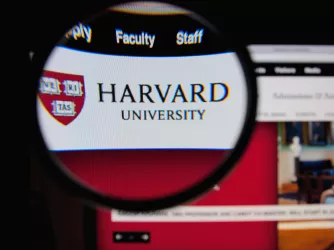Table of Contents
Lecturer’s Termination at Texas A&M - San Antonio: Who Knew What, and When?
Over the summer, FIRE weighed in on the case of Sissy Bradford, an instructor who had taught in the sociology and criminology departments at Texas A&M University–San Antonio (TAMU–SA) before being abruptly notified in May that she was no longer assigned the fall slate of classes she had been scheduled to teach.
Bradford's termination attracted considerable press, and for good reason: The timing of the decision was highly suspect. Bradford was notified of her termination within hours of the publication of an article in The Current, a San Antonio weekly paper, in which Bradford criticized the university's handling of earlier complaints she had raised about how the university responded to threats made against her.
Here's the background: In fall 2011, Bradford spoke out against the placement of a cross on a building near the entrance to campus, for which she received much criticism (and some hate mail) from the local community. In The Current article published May 16, Bradford criticized what she believed was the university's failure to take seriously her complaints that she felt unsafe on campus, and to adequately ensure her safety.
That the university had retaliated against Bradford on the basis of her expression seemed entirely plausible, given FIRE's experience defending faculty. FIRE wrote to TAMU–SA on June 1 to state our concerns; the American Association of University Professors (AAUP)wrote to TAMU–SA as well. TAMU–SA's response to us, basically, asked us to take it in good faith that it was all a coincidence.
We weren't ready to take TAMU–SA at its word, however. The timeline was suspicious, and all factors indicated that Bradford had a clear expectation of being rehired to teach for the fall. The AAUP refused to throw in the towel as well, writing two more letters urging TAMU–SA to rehire Bradford.
FIRE also filed a public records request for university emails sent around the time of Sissy Bradford's dismissal. What we received paints an inconclusive but nonetheless concerning picture of the hours leading up to Bradford's termination.
On May 16, at 2:10 PM, School of Arts & Sciences interim head William S. Bush wrote to Leticia Longoria, a scheduler in TAMU–SA's registrar's office:
Letty,
Please make the attached schedule changes asap, and notify me when they have been entered.
The only schedule changes Bush requested involved canceling Bradford's two "Community Perspectives in Crime" sections and removing her as instructor from her two sections on "Social Deviance," leaving only "Change to TBA" in the field where the instructor would be listed. (The two "Social Deviance" sections were assigned to criminology department head Durant Frantzen, who is still listed as their instructor.)
FIRE contacted Greg Harman, Editor of The Current, curious about when precisely The Current's article went online. According to Harman, the article went live at 3:39 PM—about an hour and a half after Bush sent this email.
Then, at 5:08 PM on the same day, Bush sent the email to Bradford informing her that her services would not be used in the fall semester:
Ms. Bradford,
I'm writing to inform you that the School of Arts and Sciences will not be able to offer you any classes in the fall semester.
If you wish to discuss this matter further, please submit a written request to Dr. Brent Snow, Provost and VP for Academic Affairs.
Please note that he will be traveling abroad until Tuesday, May 29.
As TAMU–SA informed FIRE in its response to our letter,
The timing of the article in the SA Current regarding Ms. Bradford's opinions of the University was pure coincidence in relation to the notification messages. In addition, Dr. Bush was not aware of the article when he provided Human Resources the list of adjunct faculty that would not be asked to return in the fall.
Given that the article seems not to have been available online when Bush had Bradford's classes removed, there may be truth to this. At minimum, he couldn't have read it if it wasn't available for reading.
But does the timing get TAMU–SA off the hook completely? There's good reason to believe TAMU–SA officials were aware that something was coming down the pipeline from The Current. The newspaper spoke with at least one TAMU–SA official, police officer Roberto Lopez (who is mentioned in the article), and the article notes that The Current had filed a public records request on May 9. Indeed, even if they hadn't been able to read the article, it's quite plausible that TAMU–SA officials were well aware that The Current was sniffing around Bradford's complaints, and that whatever it was likely to publish on the case was not going to painted them in a flattering light.
Readers can decide for themselves based on what we present here and the documentary evidence on our case page whether Sissy Bradford was retaliated against because of her protected expression, of if her dismissal as instructor was a mere coincidence, as TAMU–SA has maintained. For FIRE, the AAUP, and countless others concerned for free speech and academic freedom, the worry that Sissy Bradford was given a raw deal lingers on.
Recent Articles
FIRE’s award-winning Newsdesk covers the free speech news you need to stay informed.

Revoking Harvard’s tax-exempt status will threaten all nonprofits

Grandpa’s advice for the new wave of American censors

FIRE POLL: Only 1/4 of Americans support deporting foreigners for pro-Palestinian views
